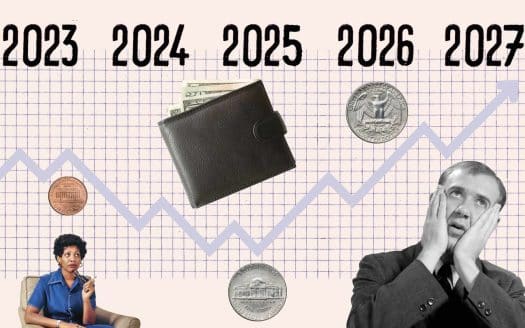Inflation Is Lower Than You've Heard
[ad_1]
:max_bytes(150000):strip_icc():format(jpeg)/GettyImages-1416709121-2a31f17f8838449184d83e88ca81c5e9.jpeg)
It's no secret that inflation has eased in recent months, but the slowdown in price growth may be more significant than popular measures suggest.
Inflation changes, as measured by the Consumer Price Index released Thursday by the Bureau of Labor Statistics, are usually given as the year-over-year change, meaning how much prices have risen over the past 12 months. In -quite a steep hit for the pocketbook, . As shown in the chart below, the slowdown has been even more dramatic when calculated by annual three-month rolling averages.
Bill Nelson, chief economist at the Banking Policy Institute, an advocacy group that represents banks, said the 12-month method is frustrating because it “dilutes new data too much.” Recent trends are more apparent in the three-month annual rolling average of inflation data. This figure is obtained by taking the change in prices over a three-month period, then multiplying it by four to calculate how much prices will change at that rate over the course of the entire year.
In other words, the three-month rolling average method focuses more on the recent past and provides a more up-to-date view of inflation trends than the 12-month change. Showing inflation this way avoids the trap of the 12-month inflation rate, which means that if price increases stabilize, it is too slow to show improvement.
John Horne, an economics professor at Washington University in St. Louis, previously wrote in a commentary: “Annual inflation numbers may quickly adjust to an upward path, but it will take time to bounce back because of the lag in inflation.” year “It will take a long time for the 12-month decline in prices to reach today's highs and for inflation to return to the 2% range we expect.”
Have a question, comment or story to share? You can apply at Diccon.
[ad_2]





